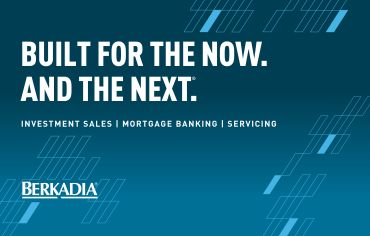Good Use of Polling: Asking Staff About Design
By Scott Spector September 30, 2016 12:15 pm
reprintsHere’s something: A recent global study by Human Spaces found that 33 percent of people consider the design of an office as part of their decision to work for a firm or not.
Here’s more: According to the Steelcase Global Report, Engagement + the Global Workplace, U.S employees are slightly more engaged than are other workers on the job, but allowing workers to more readily choose where and how they work is an effective way to heighten their engagement.
That’s important. Worldwide, engaged employees are key to companies’ earnings and success. And although the Steelcase report shows that most U.S. employees rate their work environment favorably, one-third of the employees from the 17 countries represented in the Steelcase report felt disengaged on the job. For one country examined in the report, only 1 percent of its workers were highly engaged or satisfied at work.
With such high numbers of disengaged employees around the world, coming to terms with what is not working at the workplace and how it can be improved is essential. After all, employee and business productivity are directly correlated to worker engagement, a position that benefits organizations, those who work for them and their customers.
Involving staff in the design of their workplace gives them a sense of ownership and shows that they’re valued by their firm. It’s also an important tool for recruiting and retaining employees—79 percent of middle-market companies see the working environment as a valued part of a workplace’s appeal, according to research by the National Center for the Middle Market in partnership with The Novo Group—and an effective way to increase employee engagement, productivity, innovation and efficiency.
Today’s employees are comparing the look and amenities of their offices to that of others near and far, thanks to the high visibility of those spaces through social media and the internet. As a result, the status quo on office design has been raised, with trends in wellness and amenities high on many employees’ workplace desires.
Even so, in the same way that designing offices without regard to employee input could result in worker inefficiency, striving to accommodate every employee’s workplace preference isn’t only impossible, but it’s also impractical. Embracing something in the middle, where employers seek their staff’s input on select design decisions, is likely to result in a best-of-both-worlds scenario.
One office design that we’re currently working on began with a comprehensive workplace strategy that included interactive workshops, interviews of the firm’s personnel and observation studies. The report’s findings, along with the project’s overall needs and costs, will provide a baseline for the space’s design. Guiding principles were created in the order of importance, with the bigger priorities spelled out. In the end, their new offices might not get everyone everything they want, but it’s sure to provide for some desires, perhaps, for instance, a compromise on personal space in exchange for a desired amenity.
Another client of ours considered moving out of the space it had been in for 10 years. But after exploring other options, the company decided to stay put and redesign. To do so, select personnel were included in visioning and educational sessions to both ease the transition from the office’s old design to its new one and address the best practices for the new design. Certainly, if there is going to be a shift in the workplace, the company’s staff should be informed from the beginning and be a part of the process so they understand the big-picture goals and are more comfortable with the changes ahead.
Polling staff on what they like or don’t about their office’s design can be done in two ways. First, talking with existing employees can provide important insight on how they work most effectively. Second, asking new employees about why they joined the firm and how much they value the office design can provide an understanding of aspects for successful recruitment.
As organizations grow, change and evolve, it is important for them to refresh themselves. Including people from across an organization’s different job types and hearing about what’s working and what isn’t for them is vital to a company’s success. And observational studies can show work patterns that confirm employee interviews for substantive evidence of the best way to design a workplace that not only provides maximum employee engagement and productivity but also meets a firm’s needs, values and image.


